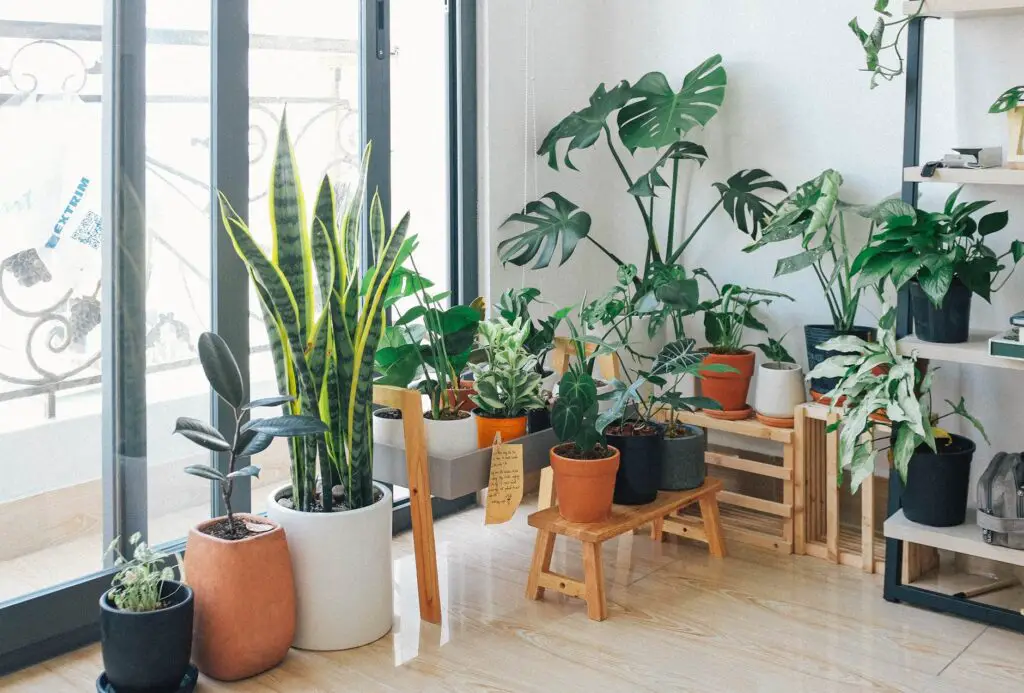Residing in USDA Planting Zone 7 is excellent since you can grow a wide variety of plants—you just have to know which ones are well adapted to your high and low temperatures.
You have to know each plant’s growing requirements. Some plants need full sun; some grow best in part shade. For some plants, well-draining soil is extremely important so they don’t suffer from wet soil that leads to root rot.
In zone 7, you may cultivate various shrubs, trees, flowers, fruits, vegetables, grasses, and other plants. Here are the best plants for zone 7.
Table of Contents
Growing Plants in Zone 7
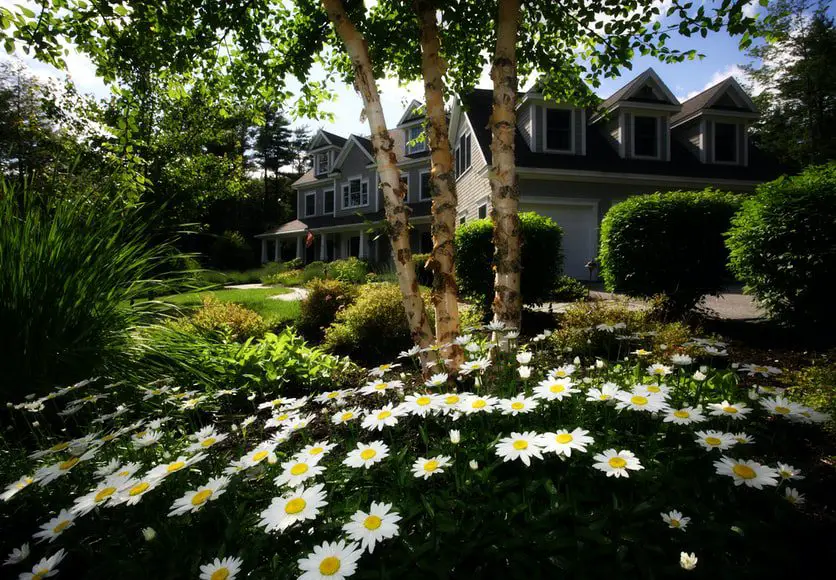
USDA Plant Hardiness Zone 7 is an area in North America where the annual minimum temperatures can go from 0 to 10 °F. Here are some places included in Zone 7:
- Southern Oklahoma
- a portion of Northern Texas
- Southern New Mexico
- Central Arizona
- Southern Utah
- Southern and Western areas of Nevada
It’s a great idea to choose appropriate plants that can survive gentle weather.
Abelia

Abelia belongs to the Caprifoliaceae (honeysuckle) family of plants. Abelia is an ornamental plant valued for its pleasant-smelling, attractive, bell-shaped, white (sometimes pink, yellow) flowers and stunning, color-changing foliage.
Abelia flowers are irresistible to pollinators such as butterflies and hummingbirds. Some Abelia cultivars are well-suited for gardeners who don’t like too much work—pruning requirements are modest. It may be used as a foundation plant, border plant, specimen plant, or container plant. It is simple to reproduce from cuttings and to establish in your landscape.
Abelia could withstand sunny and shady conditions very well. It prefers well-drained, damp soil.
Rhododendron
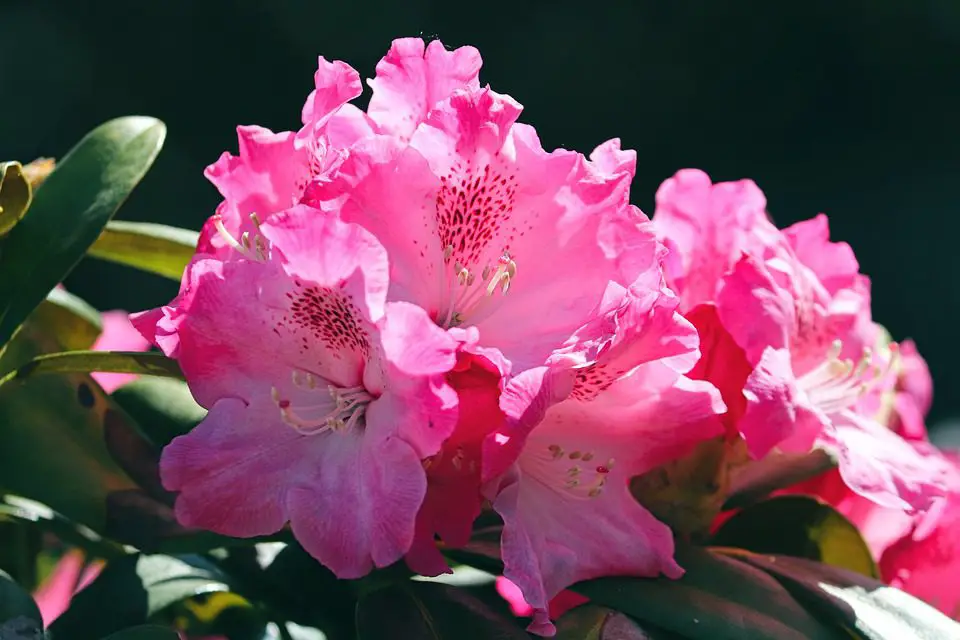
Rhododendron is a blooming evergreen tree or shrub. It’s a favorite of gardeners because of its stunning flowers—perfect as a decorative plant for spring!
The big and lush flower clusters and the range of bloom colors such as red, pink, white, orange, purple, and yellow give this plant a charm that rivals that of others. The bonus is that it’s easy to grow. You’ll easily see rhododendron plants growing in big, dense patches, and they’ve become a topic of concern due to their ability to disrupt the nitrogen cycle.
All rhododendrons have a high level of cold tolerance and the benefit of being straightforward to cultivate even in cooler environments. Rhododendron enjoys acidic, well-drained soil.
Lenten Roses (Helleborus orientalis)
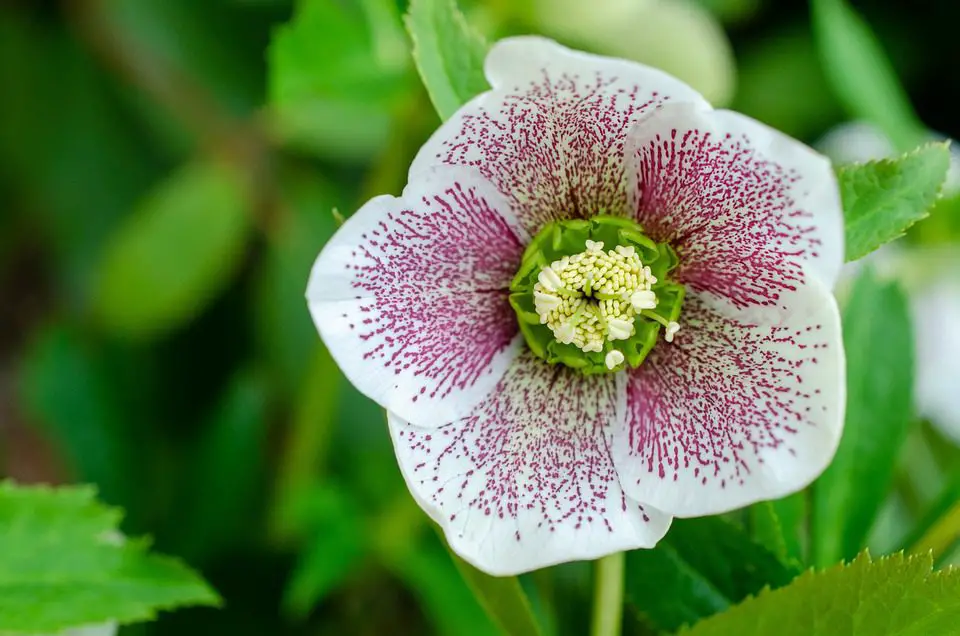
Lenten Roses have quite showy, eye-catching blooms that, although they aren’t true roses (they’re actually hellebore hybrids), resemble them. The flowers are bell- or cup-shaped and can come in different shades of white, pink, and pale purple. They are great for adding lots of color and life to your yard!
Indeed, Lenten Roses are among the most fuss-free plants to grow in zone 7. The plants will flourish if the soil is kept hydrated and mulched in winter. Still, they may endure drier circumstances once established—which will take a long time (but once they do, unlike many perennials, they seldom need to be divided).
Dianthus
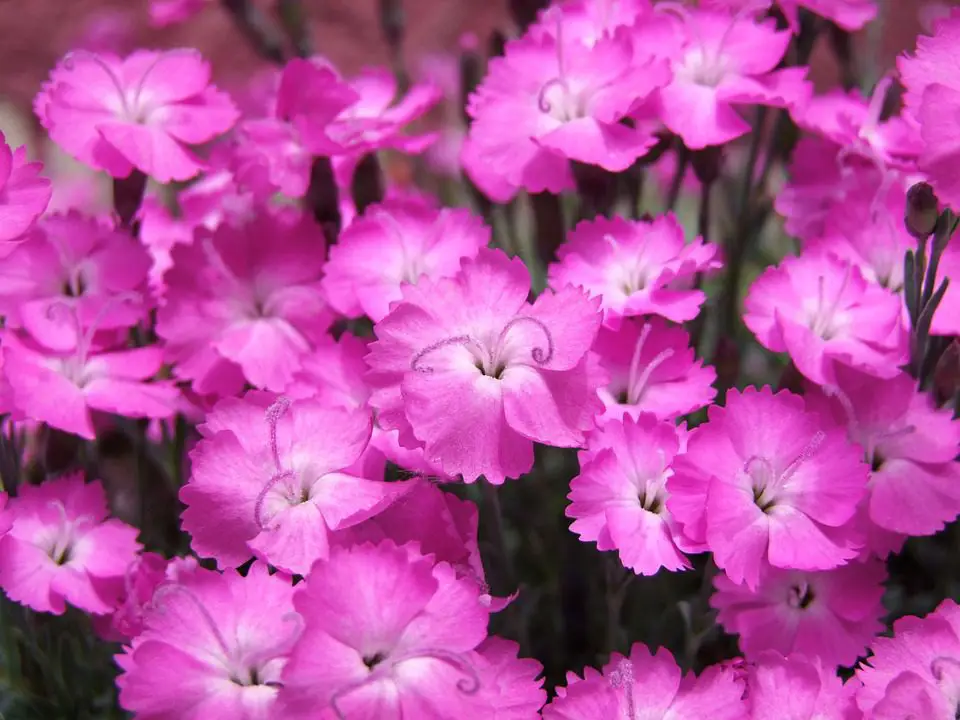
Approximately 300 species of the genus Dianthus, which belongs to the dianthus family, are found worldwide. These flowers are called “pinks,” “carnations,” or “sweet william.” The smell is extremely appealing, and the (usually) pink flowers blossom in a delicate frilly form.
Dianthus plants are hardy annuals, biennials, and perennials. People love using them as border plants or flower beds due to their bright colors and big, showy blooms. Although, some varieties, such as Alpine pinks, are better suited as ground covers given their mat-forming growth pattern.
Coral Bark Maple (Acer palmatum ‘Sango-Kaku)
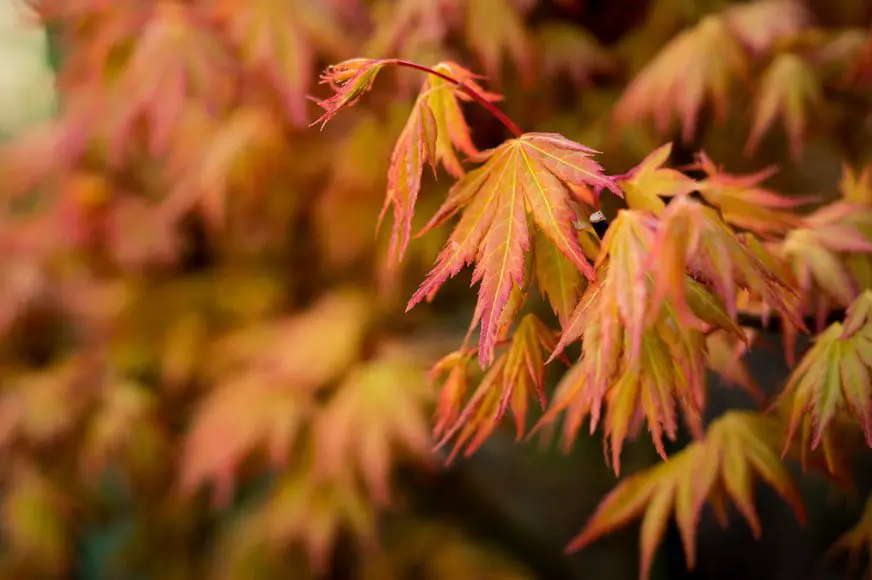
The Coral Bark Maple (or Coral Bark Japanese Maple) is a beautiful shrub or small tree that can turn heads all year round due to its unique colors.
The fine, vivid deep pink/coral red bark of the coral bark maple is its most noticeable characteristic. The bark is genuinely stunning in the winter when the leaves are dropping and may give winter appeal to warmer landscapes.
It has pale green foliage that turns soft shades of yellow in autumn, and it looks divine in winter when all the leaves have fallen as its new growth glows coral red in the winter sunshine.
Blue Fescue (Festuca glauca)
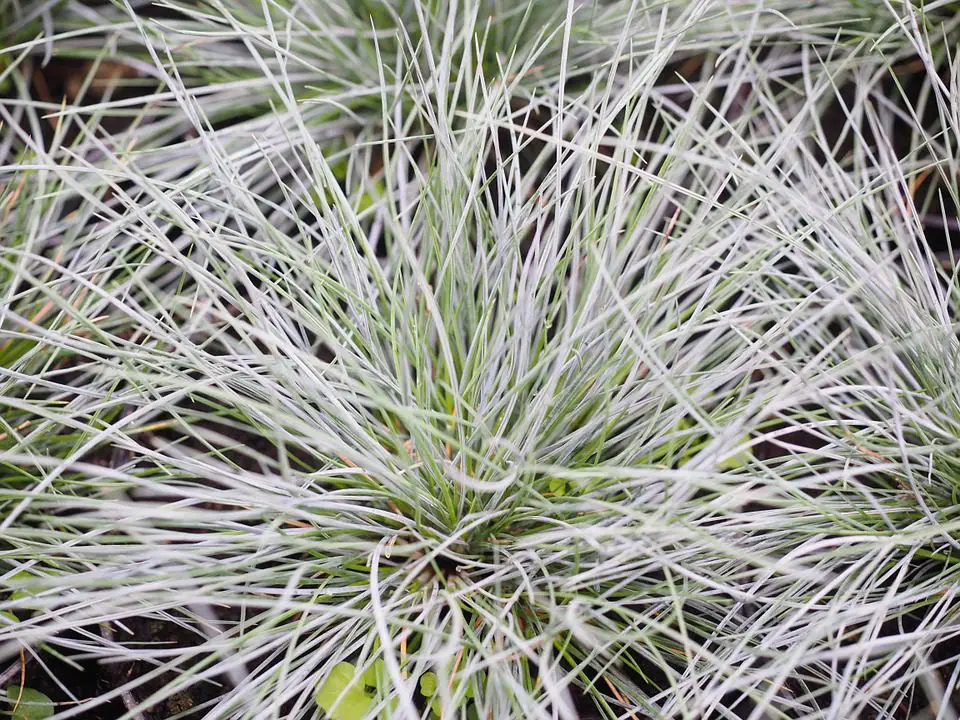
Blue Fescue is an ornamental grass that looks amazing in any yard due to its unique appearance. Firstly, its leaves are pale, finely textured, and bluish-grey. But it’s not just the color that makes it stand out from other plants; its form is also quite appealing, with its foliage densely growing like a pincushion.
Blue Fescue is a good accent for winter flower beds, as its pale color complements the bright hues of your flowers. Aside from its impressive density, it’s nice that it can be stepped on, too—that means you can place it to cover the ground. It can also act as a turfgrass with a unique appearance.
Lilyturf (Liriope muscari)
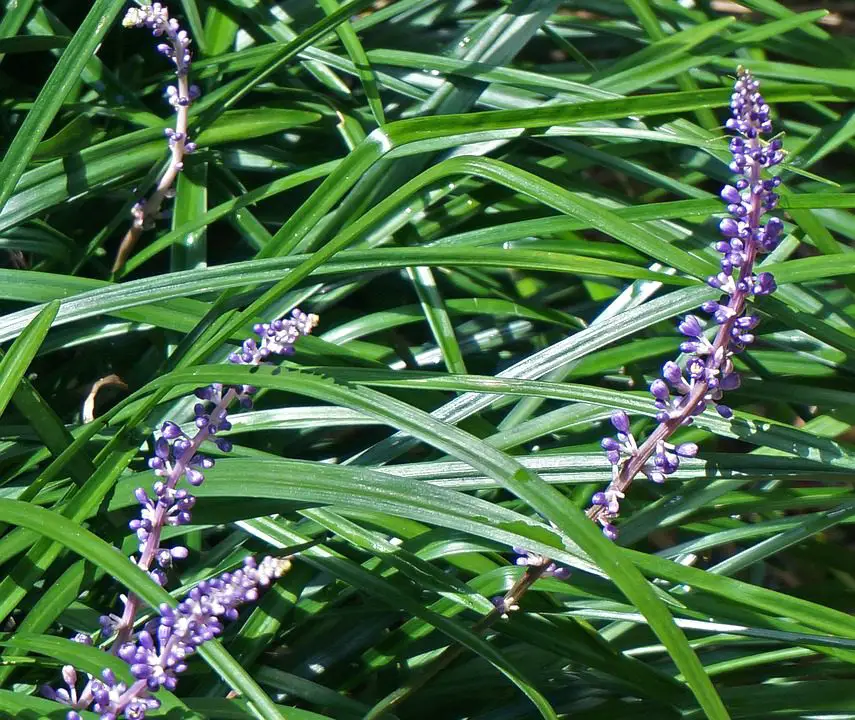
Lilyturf is a plant that has been widely used for greening and landscaping since ancient times. You will recognize it by its elongated, grass-like leaves with long spikes of bluish-purple flowers.
Lilyturf is frequently confused with mondo or monkey grass (Ophiopogon japonicus). The fruit is the sole real distinction. The lilyturf fruit is bluish/black.
It’s listed as one of the ideal plants for zone 7 due to its strong cold and heat resistance. It’s highly adaptable to a wide range of environments—fully sunny to fully shady. Lastly, you’ll hardly see it get damaged by pests, and it’s not very picky with soil at all.
Canna Lily
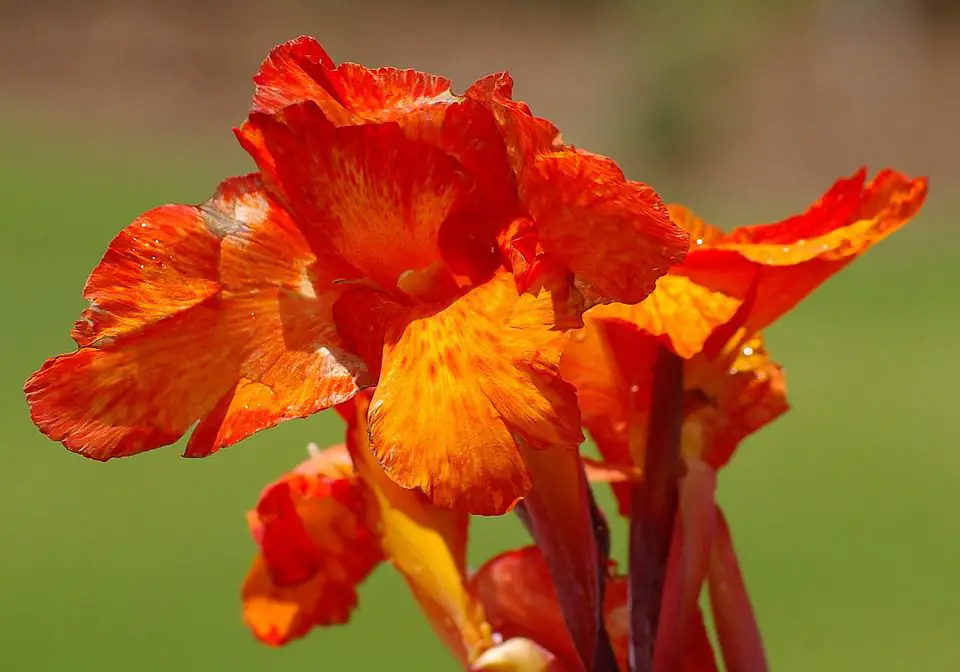
Canna Lily is a bold, colorful flowering plant suited for zone 7. It’s considered a showy summer bulb that you’ll love having in your garden!
Cannas will certainly grab your attention from afar. These are ideal if you want to transform your yard with some eye-catching scenery.
Despite its common name, it’s not actually a lily; however, it looks just as spectacular. A group of these flowers planted in one spot in the garden can look breathtaking. The variety in shades alone is enough to blow your mind, for canna lilies can exist in light, gentle hues to vibrant, striking colors. The blooms can be a dazzling red, orange, or yellow—all warm colors that remind you of a tropical setting!
Aside from the main attraction, the flower and the massive, long, oval leaves of the Canna Lily are also appealing. They can be uniform or multicolored—they will always look lively either way due to their pointed growth pattern.
As for the soil, these plants develop without problems even in ordinary garden soil, but it is advisable to plant them in fertile, well-drained, soft, spacious, and deep soil if you want good growth for the flowers. It’s also important to give them adequate space to grow and spread out. Full sun is nice for these plants.
Crocus (Crocus spp.)
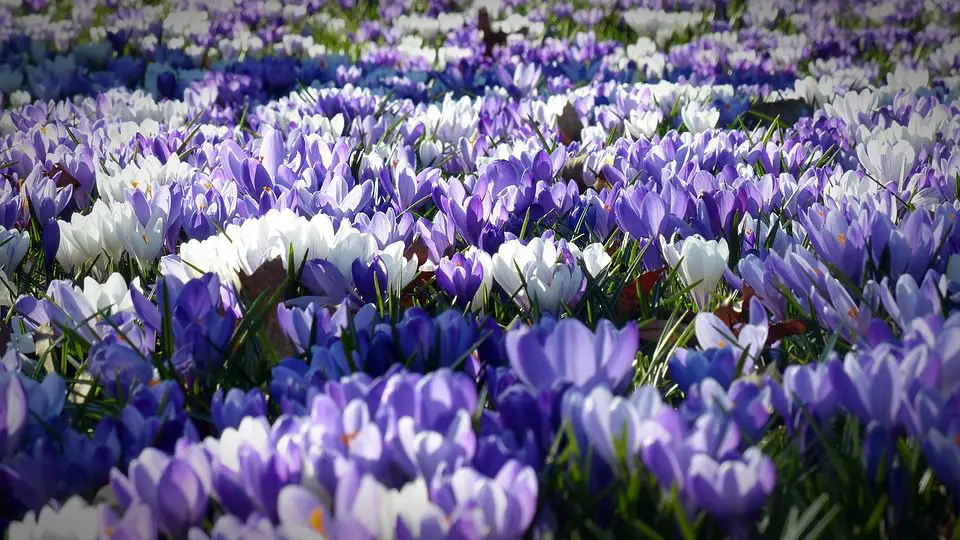
Crocus is a low-growing plant native to the Mediterranean region. It blooms in spring along with tulips, daffodils, and hyacinths.
The Crocus has unique-looking, thin, stiff leaves that look similar to pine needles. These leaves have silver/gray stripes along the ribs in the center.
But the real show-stopper? The flowers. Crocus flowers come in various colors, including white, yellow, and purple, and sometimes you’ll see double-colored ones too! The flowers bloom around March-May, and they herald the coming of spring in many parts of the world.
When planting Crocus in a container, use a shallow, broad pot and make sure they’re gathered in a bunch.
English Lavender (Lavandula angustifolia)
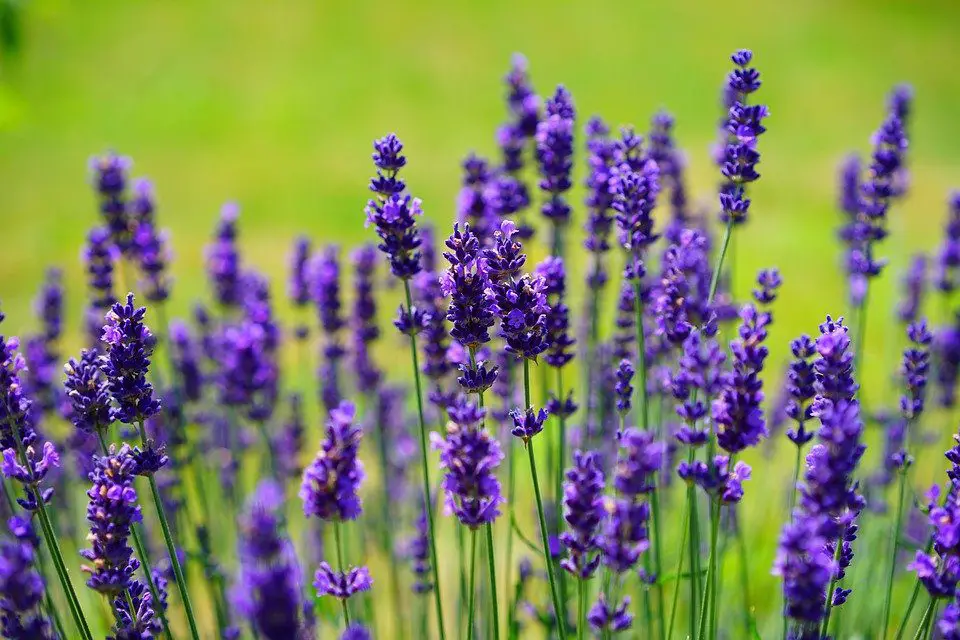
In nature, English lavender can be found in the mountains of France, Italy, and Crimea.
English Lavender boasts lovely, pleasant-smelling, deep purple flowers, and small flowers are collected in inflorescences similar to spikelets. This plant is treasured worldwide for its excellent cold resistance, low maintenance, and stunning looks. If there’s one plant everyone should have in their home, it’s the English Lavender!
It works as a great stress-reliever due to its enthralling, relaxing scent. Also, it does a beautiful job of repelling insects.
English lavender blooms once a year for a month and a half, from mid-June to late July. You can enjoy the pleasant floral scent they give off during this time.
These plants do not like extremely high temperatures and humidity levels; they do thrive in zone 7, after all.
Yellow Alyssum (Aurinia saxatilis)
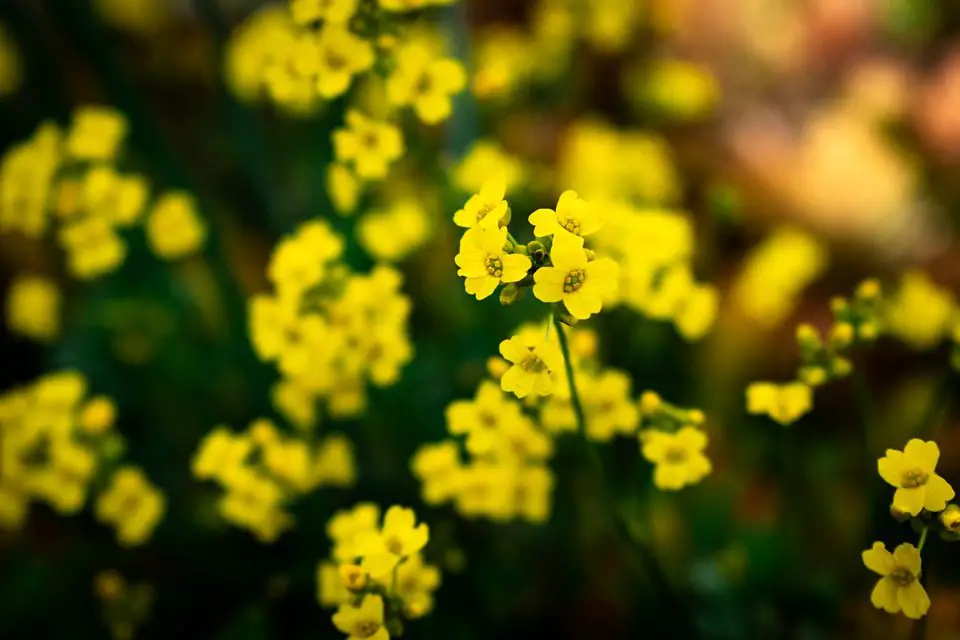
Yellow Alyssum creates a golden carpet of bright flowers with a pleasant aroma in the spring. This beautiful flowering plant harmonizes with tulips, caps, and phlox in the flower garden.
It’s a lovely groundcover plant for zone 7 since it swiftly grows and reseeds, making a thick mat quickly.
Although it is cold-resistant, it has a weak heat resistance and cannot survive extreme summer in warm regions in the USA. Aside from high temperatures, it doesn’t like acidic soil and humidity.
Hollyhock (Alcea rosea)
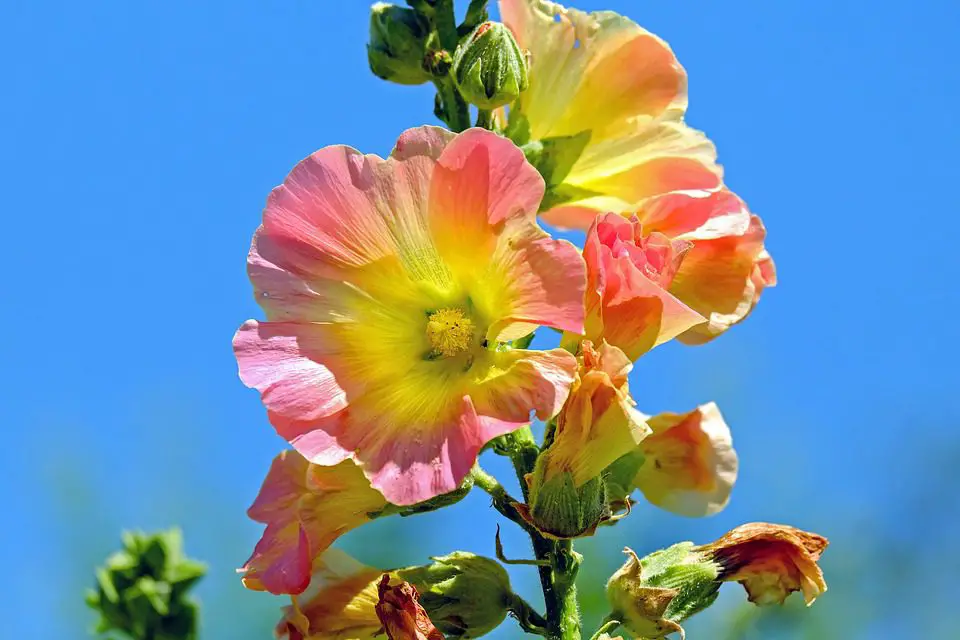
Hollyhocks are annuals or biennials of the Malvaceae family, and these are flowering plants that produce big, cup-shaped flowers on tall spikes. You’ll see hollyhocks in shades of pink, purple, blue, red, yellow, white, and black.
Although it’s a plant with strong drought and heat resistance, it’s vulnerable to heat, so place it somewhere unreachable by harsh sunlight.
Hollyhocks need plenty of water when the soil is dry in the summer. It hates excessive humidity, so be careful not to let the soil get too damp. If you are planting hollyhocks in the garden, simply water the soil to ensure it does not dry out.
Candytuft (Iberis sempervirens)
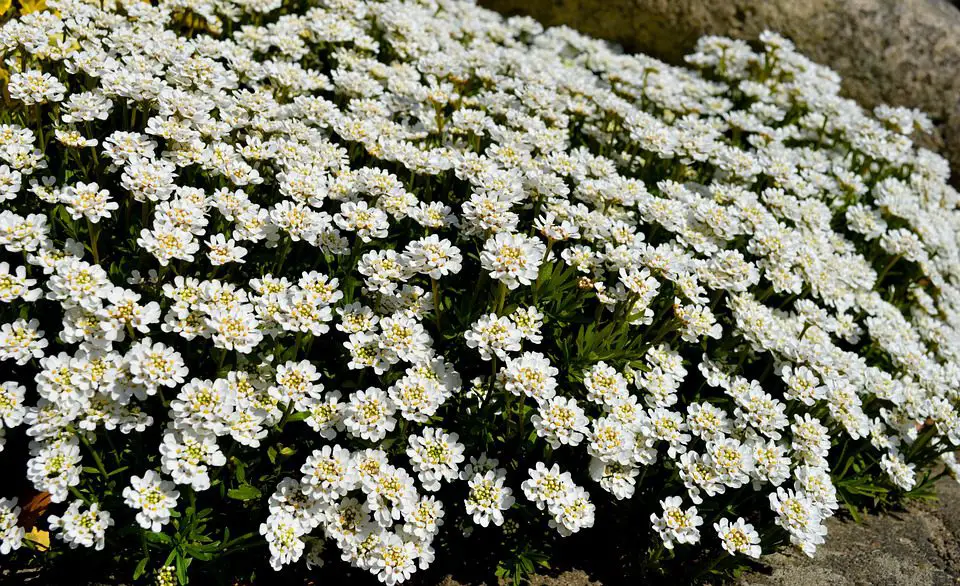
Candytuft has a lot of white or pink blossoms that are quite flashy and beautiful. It is an ornamental plant with evergreen leaves and brilliant flower blossoms that effectively attract pollinators.
Candytuft, both evergreen and perennial, can be used if you want an eye-catching flower accent or a showy, flowery hedge that outlines a border. It blooms from spring to summer.
Candytuft may thrive in moderate shade, but it prefers full sun. It’s best to plant your candytuft in a sunny location. It would help the soil with its drainage, which is vital since overly wet soil will hinder its development and distinctive flowers.
Daffodils (Narcissus)
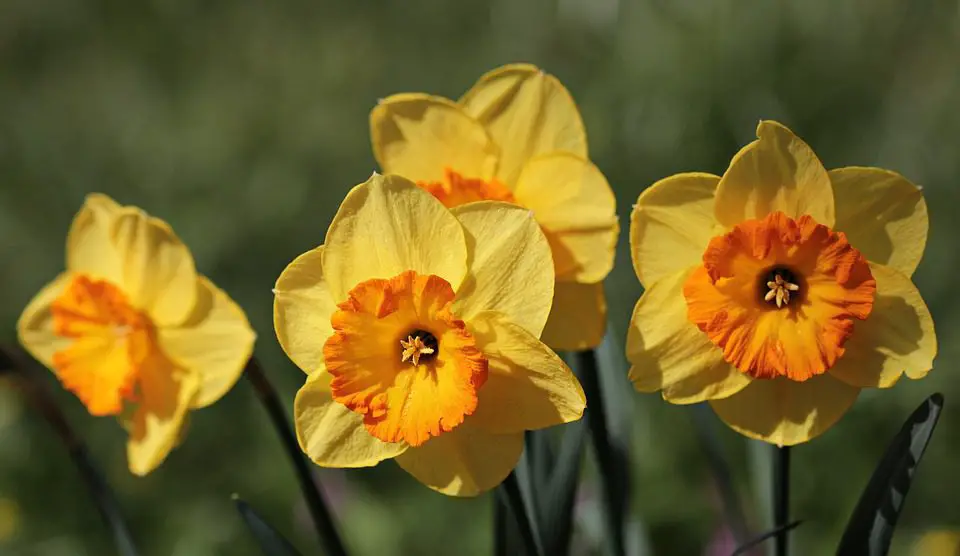
Daffodils are one of the least demanding flowering plants you can grow in zone 7a, and they are ideal for beginners and less patient gardeners. Hardly any spring flower is as popular as the daffodil.
Daffodils grow near water. The scientific name, Narcissus, refers to an exceptionally handsome Greek man that fell in love with his own reflection in the water and eventually died. The flower that grew there was named after him. This famous story gave rise to the word narcissist, meaning excessive self-love.
It would help if you planted daffodils in the fall before the first frost. This is owing to the fact that the bulbs require a low temperature in the winter to enhance root development and prepare for blossoming in the spring. The soil in which daffodils grow should not be too dry for long periods—also preferably well-drained and slightly acidic.
Black-Eyed Susan (Rudbeckia hirta)
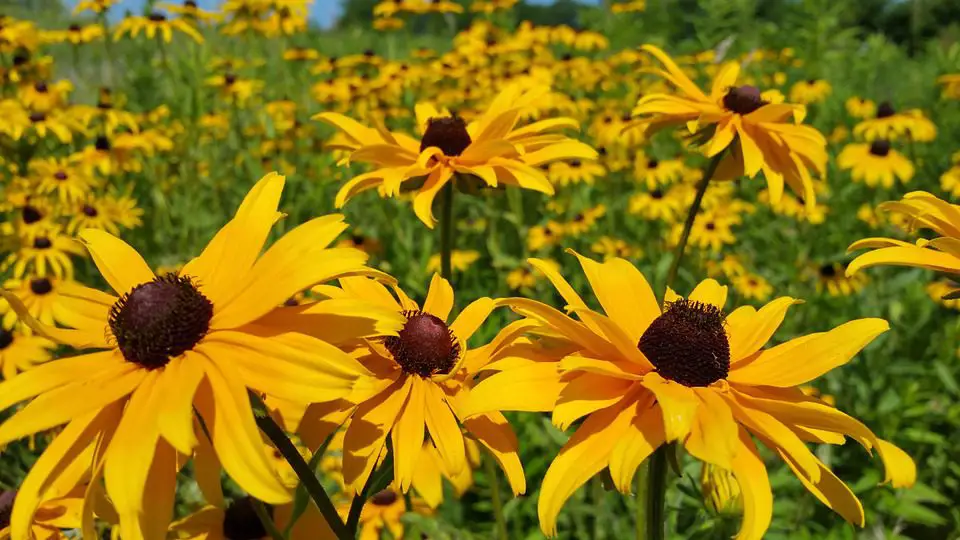
With its eye-catching, bright yellow flowers with a dark center, the Black-eyed Susan is one of the most popular annual ornamental plants for zone 7 gardens, balconies, and terraces. It can work as a pretty decorative plant in hanging baskets for indoor use!
The Black-eyed Susan will flower for a long time and grow up to three feet tall. Even if you don’t deadhead them, these plants enjoy a considerable bloom time, making them more interesting to homeowners.
Bees and butterflies, among other insects, will love getting nectar from the blooms. Upon consuming the nectar, these pollinators spread pollen to other plants. The black-eyed Susan is a successional plant that thrives on clay, loam, and sandy soils. This forb is a fan of full sunlight, slightly damp to moderately dry soil, and it likes to be in acidic soils with a pH of less than 6.8.
Coneflowers (Echinacea)
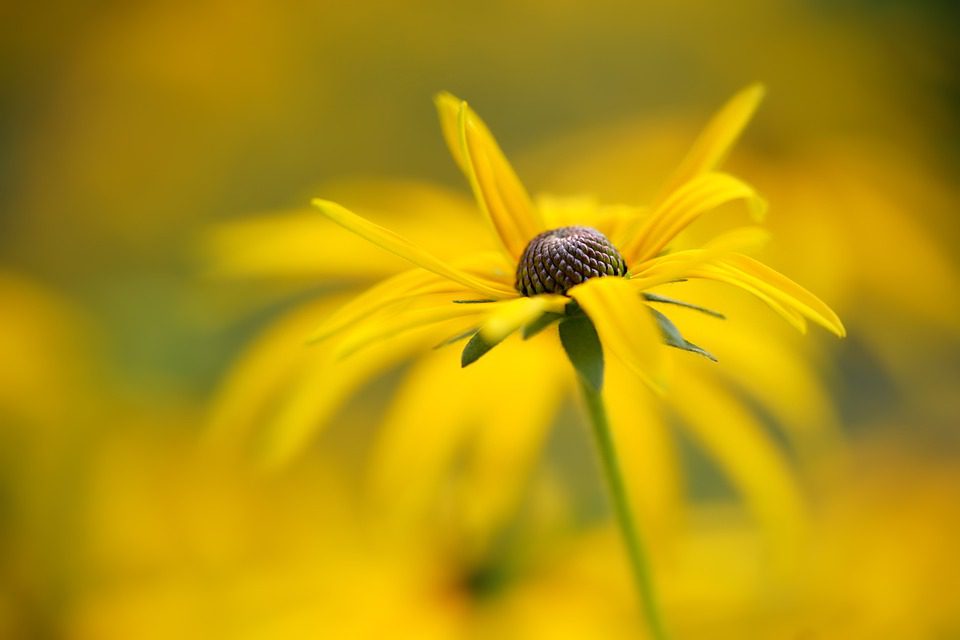
Echinacea is a plant of the genus Rudbeckia native to North America. It’s a well-known medicinal plant; some Echinacea species’ flowers, leaves, and roots are used to make drugs.
Coneflowers come in different colors. Some varieties have purple-pink flowers, some come in more striking shades such as brilliant red (as with Echinacea’ Firebird’), and some pink, yellow, and orange ones exist as well. There are too many to list them all here! You can mix and match colors to make your landscape a captivating one.
It’s a great thing coneflowers are native to North America and hardy in zones 4-9, so you don’t have to worry about them acclimating to the environment.
Lily of the Valley (Convallaria majalis)
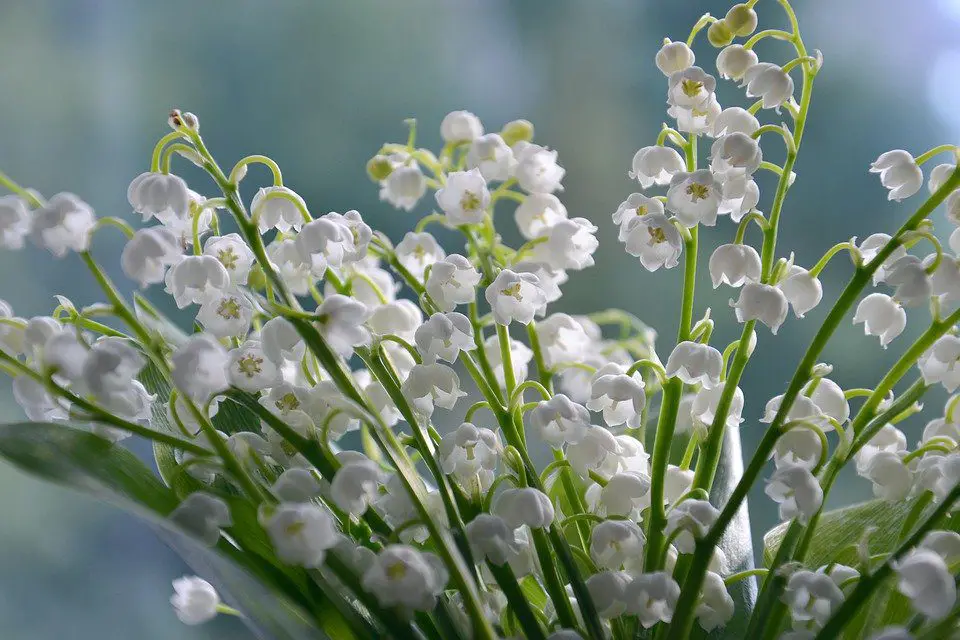
Lily of the Valley is a herbaceous perennial plant that grows in temperate regions. They can be found in forests, hills, and plains regions of northern Asia, Europe, and North America.
From afar, the lovely Lily of the Valley appears to be elegant and charming, and you can see why: this plant has pleasant-smelling, bell-shaped, white flowers (that face downward) in clusters surrounding its stems.
Lily of the Valley needs rich, cool soil, so it’s among the best plants to grow in Zone 7. If your plant likes it where it is, you’ll notice that it will multiply and form a beautiful flowery carpet after a few years.
But it would be best if you were careful around this plant. Lily of the Valley produces cardiac glycosides; that’s why it’s considered poisonous.
Hosta
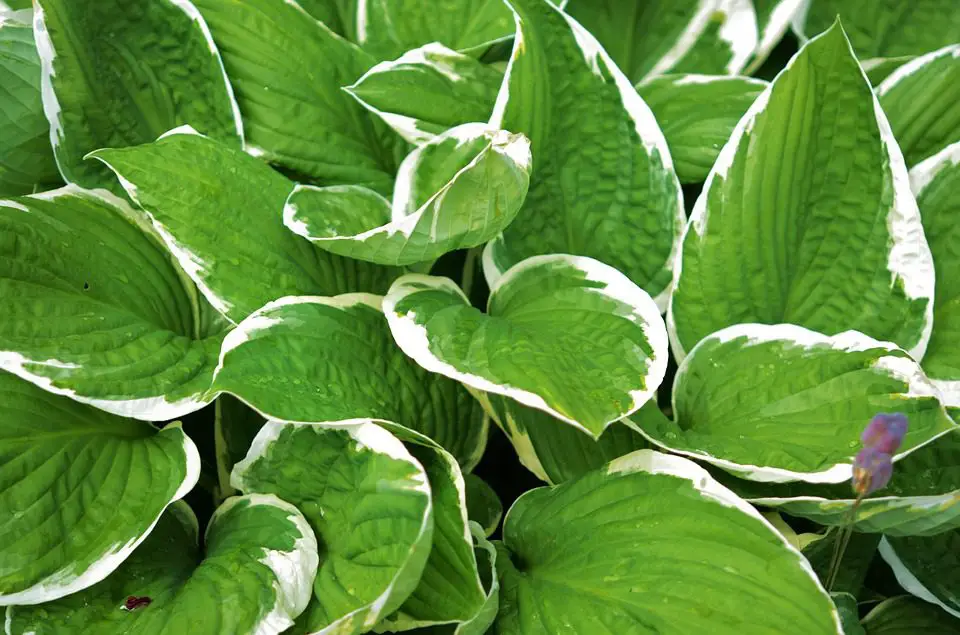
Hosta is a perennial plant cultivated in temperate regions of the world. Wild species are a specialty of East Asia. They are commonly found throughout Japan, where most species are distributed.
There are approximately 2500 varieties of Hostas! There are numerous differences, including leaf color and size, variegation, bloom color, flower size, etc. It has a massive foothold as an attractive plant in a shady garden.
Hosta is popular as an ornamental plant because of its foliage’s beautiful shape and color. Its leaves are flat, usually oval, and feature veins with vertical lines running through them.
Hostas prefer partially shady conditions. If you have a big tree, that’s where your hostas would like to be.
Japanese Painted Fern (Athyrium niponicum)
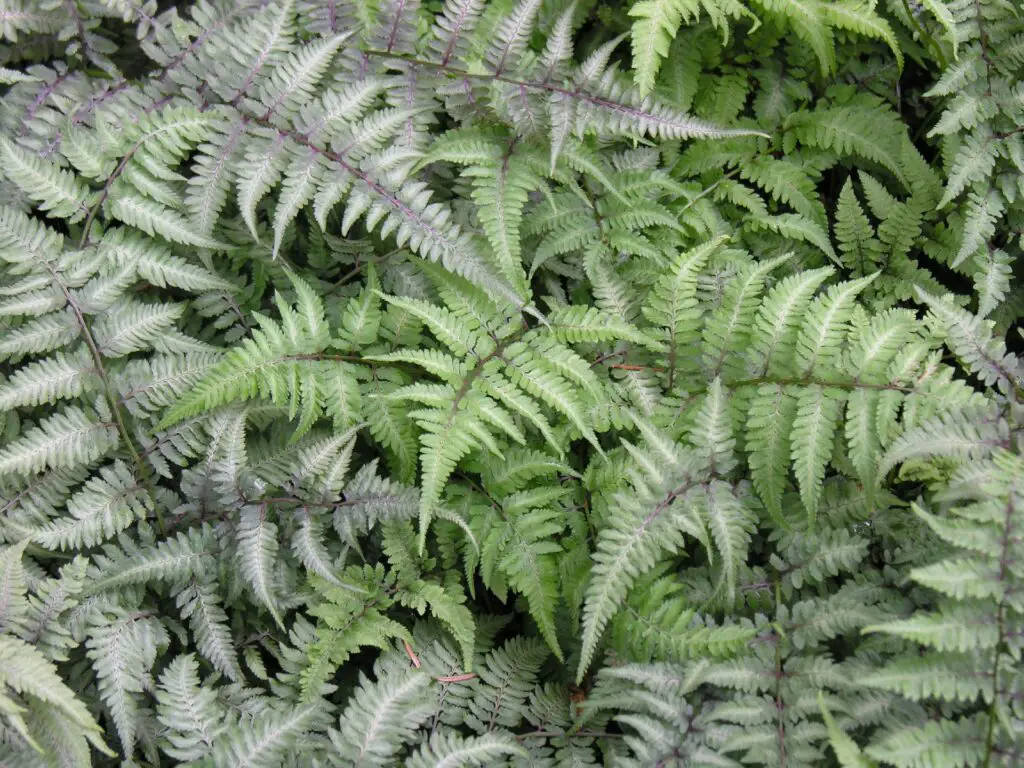
Japanese Painted Fern (Athyrium niponicum or Athyrium japonicum) thrives in damp, shady places. You’ll likely find it in the understory of forests and on the roadside.
The Japanese Painted Fern is popular in shade gardens in Europe and the United States.
It is a perennial, however, when the rhizome dies, the plant dies as well, and if the underground component survives the winter, the plant will grow the following year. It grows with spores instead of seeds—a characteristic common to all ferns.
There’s a reason why this plant prefers a moisture-rich environment; it makes it easier for the sperm to travel to the egg.
An egg producer creates eggs and a sperm maker that generates sperms in the front lobe, and when the eggs get fertilized by the sperms, they turn into zygotes that form new petioles and leaves. When the petioles and leaves grow sufficiently big, they turn into ferns. And you can say that the plant successfully multiplied.
Salvia
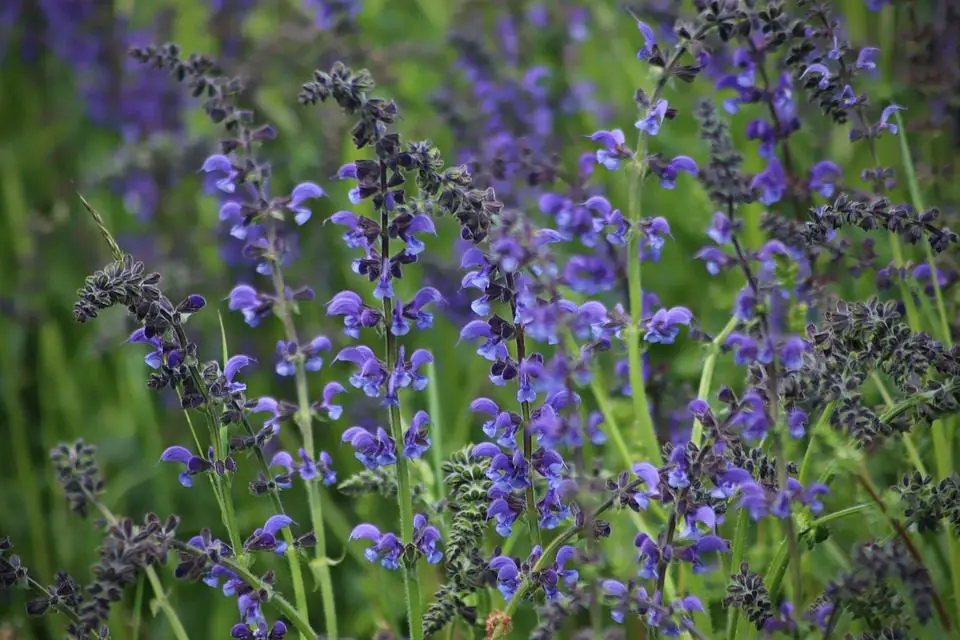
Salvia blooms from summer to fall. Many species of this mint family are real eye candy, especially with their blue to violet or red flower colors! The intense blue panicles of flowers and the round structure of the plant make it look attractive in the landscape.
Salvia, its scientific name, means “to be healthy,” “to save,” or “salvation.” Sage is sometimes referred to be the plant of immortality, home virtue, good health, and enlightenment. The Romans used sage as a sacred ritual plant. It’s not all myth, though, since Salvia has been the subject of interest in so many health-related scientific studies.
Full sunlight and well-drained soil are ideal for all salvias. These plants will need to be pruned once in the spring and again in July.
REFERENCES
scienceline.ucsb.edu/getkey.php?key=4646
https://planthardiness.ars.usda.gov/
https://www.ehow.com/info_8166518_states-zone-710.html
https://www.caes.uga.edu/research/impact/impact-brief/10119/new-abelia-for-the-landscape.html
https://phys.org/news/2014-10-undergraduate-rhododendrons-invade-conquer-disturbing.html
https://ucanr.edu/blogs/blogcore/postdetail.cfm?postnum=46604
https://pss.uvm.edu/ppp/articles/hellebore.html
https://bangladeshbiosafety.org/wp-content/uploads/2017/06/Biology_of_Carnation_Au-1.pdf
https://www.rhs.org.uk/plants/5696/dianthus-alpinus/details
https://www.britannica.com/plant/pink-plant
https://plants.ces.ncsu.edu/plants/acer-palmatum-sango-kaku/
https://powo.science.kew.org/taxon/urn:lsid:ipni.org:names:20008857-1
https://www.bellarmine.edu/faculty/drobinson/Lilyturf.asp
https://extension.umass.edu/plant-identification/canna-lily
https://www.ncbi.nlm.nih.gov/pmc/articles/PMC6925501/
https://landscapeplants.oregonstate.edu/plants/iberis-sempervirens
https://ipm.missouri.edu/MEG/2009/9/Daffodils-Harbingers-of-Spring/
https://www.britannica.com/topic/Narcissus-Greek-mythology
https://www.ndsu.edu/pubweb/chiwonlee/plsc211/student%20papers/articles00/rkraft/daffodil.htm
https://plants.usda.gov/DocumentLibrary/plantguide/pdf/pg_ruhi2.pdf
https://forages.oregonstate.edu/ssis/plants/plant-types/forbs
https://www.wildflower.org/plants/result.php?id_plant=ruhi2
https://medlineplus.gov/ency/article/002581.htm
https://extension.illinois.edu/blogs/garden-scoop/2020-08-01-hostas
https://www.bellarmine.edu/faculty/drobinson/Hosta.asp
https://hort.extension.wisc.edu/articles/sage-salvia-officinalis/

